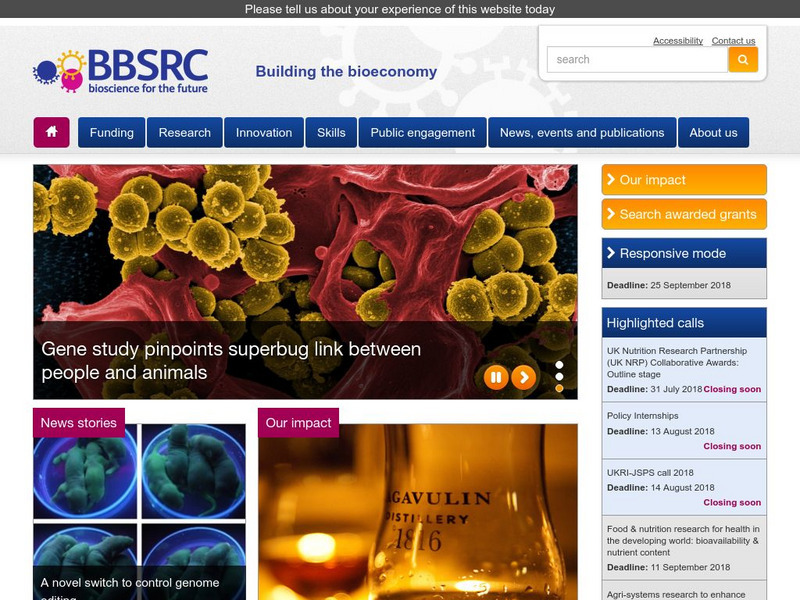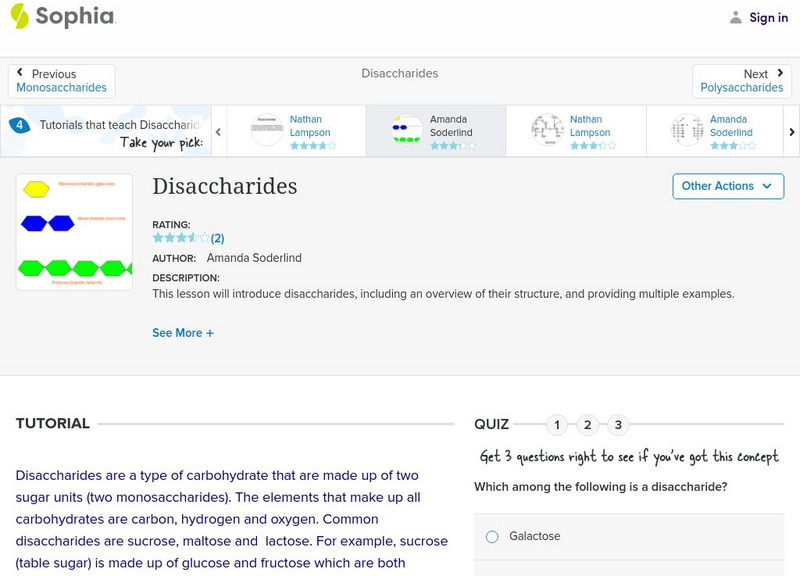Curated OER
Primate Classification 2006
Students examine groups of hierarchy and see how primates are categorized. In this primate classification lesson students view video and slides then examine the taxonomy of primates.
Curated OER
Head to Foot
Students describe the body form and major anatomical structures of squids and describe some unusual or unique features of newly-discovered deep water squid species. They infer what types of food squids use from their anatomical features.
Curated OER
Spawn!
High schoolers explain that the ability of certain reef fishes to have a successful spawning is dependent on numerous environmental conditions. They list some of the factors needed by reef fishes in the South Atlantic Bight to have a
Curated OER
Conditions in And Connections To Indonesia
Eleventh graders research an animal and its habitat, the conditions of that habitat and how its connections to the rest of the world are affecting that habitat.
Curated OER
Genome: The Secret of How Life Works
Students become aware that genetic issues impact many areas of life, such as medicine, food and agriculture, and law. They become aware that there are many ethical issues related to genetics.
Curated OER
Rapid Mycological Assessment
Students examine types of mycology methods. They practice using new vocabulary and answer key questions. They complete a field survey and analyze their results.
Curated OER
The Fish Trade
Students read and discuss a document regarding how the global fish trade is important to humans all over the world. Students conduct Internet research and write a scenario about what would happen if other countries did not help manage...
Curated OER
Toxicology 2: Finding the Toxic Dose
Learners brainstorm with group partners to decide upon a chemical they would like to test, and outline a procedure for their investigation. They then present in groups their ideas to the rest of the class as well as the chemical they...
Curated OER
Making Good Decisions
Students practice the skill of reasoned decision making. In this making decisions instructional activity, students read from the website 'Little Planet Times' and use the 'Making Good Decisions' E-Sheet to help with the article. Students...
CK-12 Foundation
Ck 12: Introduction to Biology: Unit 1: Vocabulary
[Free Registration/Login may be required to access all resource tools.] Lists vocabulary terms related to the scientific process for the first unit of a beginning biology text.
Other
Bbsrc: Biotechnology and Biological Sciences Research Council
This site is one of the United Kingdom's clearinghouses for Biotechnology and Biological information. Learn about Biotechnology and Biological Sciences Research Council is and what it offers.
Annenberg Foundation
Annenberg Learner: The Habitable Planet: Unit 9: Biodiversity Decline
This is an extensive learning module on biodiversity and its decline. It looks at ways biodiversity is threatened, the possibility of another mass extinction, the causes and consequences of habitat loss, factors that drive biodiversity...
Other
Ms. Vaughn's Biology 1: Unit 4: Cell Energy
The materials on this page were prepared by a high school teacher for a Biology class. This section supports a unit on cell energy and includes course readings, lab notes, PowerPoints and diagrams.
Other
Ms. Vaughn's Biology 1: Unit 5: Cell Biology
The materials on this page were prepared by a high school teacher for a Biology class. This section supports a unit on cell biology and includes course notes and learning activities.
Sophia Learning
Sophia: Disaccharides: Lesson 1
This lesson will introduce disaccharides, including an overview of their structure, and providing multiple examples. It is 1 of 4 in the series titled "Disaccharides."
CK-12 Foundation
Ck 12: Life Science: Cell Biology
[Free Registration/Login may be required to access all resource tools.] A cell is the smallest structural and functional unit of an organism. Learn more about cell biology in this learning module produced by CK-12.
Indiana University
Ensi: Introduction to Evolution Lesson Plan
This unit plan presented by the Evolution and the Nature of Science Institutes is one way to introduce evolution. The authors have created a Pre-test about what evolution is/is not to address misconceptions. There are handouts and...
abcteach
Abcteach: Ponds
[Free Registration/Login Required] The abcteach directory contains sample pages from their pond unit for non-members. Handouts are in PDF format.
Oswego City School District
Regents Exam Prep Center: Reproduction: Asexual Reproduction
Review of asexual reproduction shows how an offspring is produced from one parent. The methods of asexual reproduction (binary fission, budding, sporulation, and mitosis) are explained briefly accompanied by illustrations.
Louisiana Department of Education
Louisiana Doe: Louisiana Believes: English Language Arts, Grade 10: Henrietta's Dance
Young scholars consider the importance of leaving a legacy and the myriad ways that we can leave a legacy, through our language, our families, or even our cells. Students also explore the issue of ownership and ethics of medical...
Alabama Learning Exchange
Alex: Can You Curl Your Tongue?
This lesson is adapted from a Connected Mathematics Unit, How Likely is It? This investigation introduces biology as a source of applications for probability. In this lesson, Curling your Tongue, students determine how many students in...
Khan Academy
Khan Academy: Passive Transport & Active Transport Across Cell Membrane Article
The cell membrane is one of the great multi-taskers of biology. It provides structure for the cell, protects cytosolic contents from the environment, and allows cells to act as specialized units. Learn how the membrane functions to...
Other
Adopt a Pond Wetland Curriculum Resource
The Adopt-A-Pond Program was created by the Toronto Zoo for teachers looking for a guide to wetland issues and resources.























